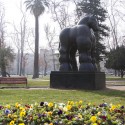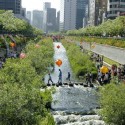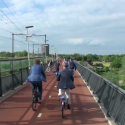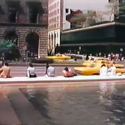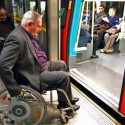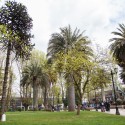Publicación de la semana: “Design with the other 90%: Cities”
“Design with the other 90%: Cities”
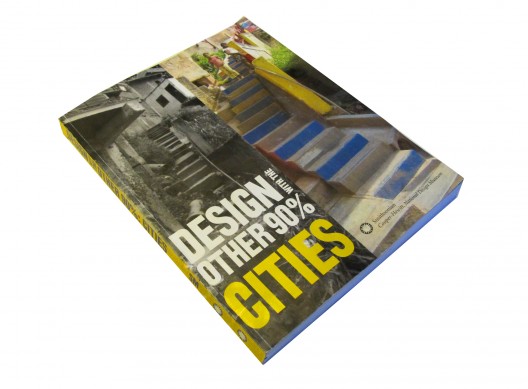
Editado por: Cooper-Hewitt, National Design Museum, Smithsonian Institution
Idioma: Inglés
ISBN: 978-0-910503-83-9
Año: 2011
Autor: Cynthia E. Smith et al.
Dónde encontrarlo: Se puede comprar a través de amazon.com
Sobre el libro:
Hoy en día, alrededor de mil millones de personas viven en los denominados guetos (o “slums”), asentamientos informales que carecen de infraestructura apropiada, servicios sanitarios, electricidad y seguridad, y se estima que para el 2030 esta cifra aumentará a 2 mil millones. Éste libro explora procesos de soluciones innovadoras de distintos ámbitos urbanos para este 90% de la población mundial que no está al alero del urbanismo tradicional. Este libro es un compendio de una docena de ensayos y más de 50 fichas de proyecto en donde se examinan esfuerzos y soluciones en planificación urbana, diseño sustentable, vivienda económica, emprendimiento, educación informal, sanidad, etc.
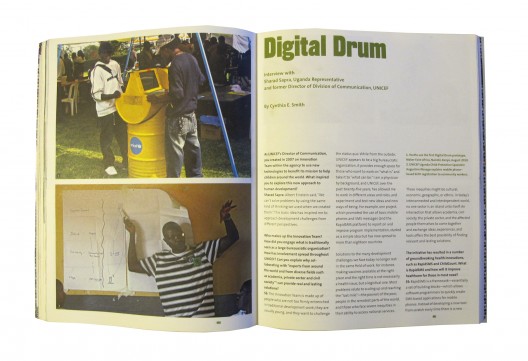
Contenidos:
Foreword – Bill Moggridge, Caroline Baumann
Foreword: Innovation in the age of cities – Judith Rodin
Introduction – Cara McCarty
Designing inclusive cities – Cynthia E. Smith
Shack/slum dwellers international – Interview with Sheela Patel and Jockin Arputham
Building new worlds: Design and the second urban transition – Edgar Pieterse
Urbanism manual – Interview with Gabriela Sorda
Trusting that people can do it – Somsook Boonyabancha
Ushahidi – Interview with Juliana Rotich
Dirty work: Landscape and infrastructure in nonformal cities – Christian Werthmann
Abalimi Bezekhaya – Interview with Christina Kaba and Robert Small
Digital Drum – Interview with Sharad Sapra
Profiles – Selected by Cynthia E. Smith with Andrea Lipps
Selected Bibliography
Selected Index
Acknowledgments
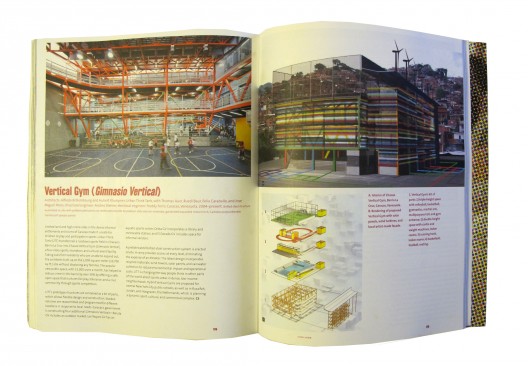
Extracto:
“I was on my third liter of water; dirt and sand covered me as I walked in blowing wind next to the largest dumpsite in Dakar, Senegal. I had just come from seeing the efforts of a team of Senegalese and Canadian architecture students, who designed and built with local artisans a series of mosaic-clad community wells for the growing peri-urban settlement of Malika. We took an hour’s journey back to the center of the city, passing building after building under construction, emblematic of this city’s rapid growth.
This would be my last interview after a year of field research in fifteen different cities in Asia, Africa and Latin America. “What have you discovered in your travels?” asked Oumar Cissé, Executive Director of the African Institute for Urban Management. I told him I had set out to find successful design solutions to rapidly expanding informal settlements, and had found that the most innovative were hybrid solutions that bridge the formal and informal city. Oumar affirmed, “Formal mechanisms are not adequate to tackle this rapid informalization of the city. We are not able to make services available as quickly as the growth. We should make our process more appropriate for this new reality by creating an interface between the formal and informal.”
“Estaba en mi tercer litro de agua; me cubrían la arena y la mugre mientras caminaba a través del viento al lado del vertedero más grande de Dakar, Senegal. Venía de ver los esfuerzos de un equipo de estudiantes de arquitectura senegaleses y canadienses, quienes diseñaron y construyeron, junto con artesanos locales, una serie de pozos comunitarios revestidos de mosaicos para el creciente asentamiento periurbano de Malika. Tomamos un viaje de una hora de vuelta al centro de la ciudad, pasando edificio tras edificio en construcción, cosa emblemática del rápido crecimiento de esta ciudad.
Ésta sería mi última entrevista después de un año de investigación en terreno en quince ciudades distintas de Asia, África y Latinoamérica. “¿Qué has descubierto en tus viajes?” me preguntó Oumar Cissé, Director Ejecutivo del Instituto Africano de Administración Urbana. Le conté que había viajado para encontrar soluciones de diseño exitosas para asentamientos informales que se expandían rápidamente, y había descubierto que las más innovadoras eran soluciones híbridas que unían la ciudad formal y la informal. Oumar afirmó, “Los mecanismos formales no son adecuados para abordar esta rápida informalización de la ciudad. No somos capaces de hacer servicios disponibles a la velocidad del crecimiento. Deberíamos hacer nuestro proceso más apropiado para esta nueva realidad creando una interfaz entre lo formal y lo informal.”


